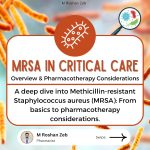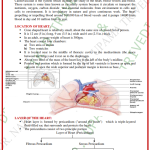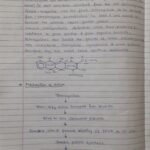MODERN PHARMACEUTICS
SEMINAR ON
(MPH-103T)
PRESENTED TO: PRESENTED BY:
Dr. YASMINE SULTANA NIDHI AGGARWAL
M.PHARMA (Pharmaceutics)
1stsem.
SPER, JAMIA HAMDARD 1
MODERN PHARMACEUTICS
INTRODUCTION
IMPORTANCE OF DRUG-EXCIPIENT INTERACTIONS
MECHANISM OF DRUG-EXCIPIENT INTERACTIONS
1. PHYSICAL DRUG-EXCIPIENT INTERACTIONS
2. CHEMICAL DRUG-EXCIPIENT INTERACTIONS
3. PHYSIOLOGICAL/BIOPHARMACEUTICAL DRUG-EXCIPIENT
INTERACTIONS
DIFFERENT ANALYSIS METHODS FOR DRUG-EXCIPIENT
INTERACTIONS
1. THERMAL TECHNIQUE
2. SPECTROSCOPIC TECHNIQUE
3. CHROMATOGRAPHIC TECHNIQUE
CONCLUSION
2
MODERN PHARMACEUTICS
WHAT IS AN EXCIPIENT ?
• An excipient is an inactive substance that serves as the
vehicle or medium for a drug or other active substance.
EXCIPIENT
DRUG DOSAGE
(Inert/inactive
(API) FORM
additives)
• An excipient is a substance formulated alongside the active
ingredient of a medication, included for the purpose of long-
term stabilization, bulking up solid formulations or to confer a
therapeutic enhancement on the active ingredient in the final
dosage form, such as facilitating drug absorption, reducing
viscosity, or enhancing solubility.
3
MODERN PHARMACEUTICS
DRUG-EXCIPIENT INTERACTIONS REPRESENT AN
IMPORTANT PHASE IN DRUG DEVELOPMENT.
DRUG SUBSTANCES ARE USUALLY COMBINED WITH
EXCIPIENTS WHICH SERVE DIFFERENT AND SPECIALIZED
PURPOSE.
ALTHOUGH EXCIPIENTS ARE PHARMACOLOGICALLY INERT,
THEY CAN UNDERGO CHEMICAL REACTIONS AND
PHYSICAL INTERACTIONS WITH DRUG SUBSTANCES UNDER
FAVOURABLE ENVIRONMENTAL CONDITIONS.
4
MODERN PHARMACEUTICS
THESE INTERACTIONS CAN LEAD TO INSTABILITY
RESULTING IN THE FORMATION OF NEW ENTITIES WITH
DIFFERENT PHYSICOCHEMICAL PROPERTIES AND
PHARMACOLOGICAL EFFECTS.
DRUG-EXCIPIENT INTERACTIONS HAVE BEEN USED AS
AN APPROACH FOR ACCEPTING/REJECTING EXCIPIENTS
FOR USE IN PHARMACEUTICAL FORMULATIONS, THUS
ALLOWING THE RAPID OPTIMIZATION OF A DOSAGE
FORM WITH RESPECT TO PATENTABILITY, PROCESSING,
DRUG RELEASE, ELEGANCE, AND PHYSICOCHEMICAL
STABILITY.
5
MODERN PHARMACEUTICS
It tells about the stability profile of a dosage form.
It bridges drug discovery and development.
It is essential investigational new drug submission
(IND).
It helps to avoid surprise problems during
formulation processes.
6
MODERN PHARMACEUTICS
1. PHYSICAL
DRUG-
EXCIPIENT
INTERACTIONS
2. CHEMICAL
DRUG-EXCIPIENT
INTERACTIONS
3.PHYSIOLOGICAL/
BIOPHARMACEUTICAL
DRUG-EXCIPIENT
INTERACTIONS
7
MODERN PHARMACEUTICS
PHYSICAL DRUG-EXCIPIENT
INTERACTIONS:
These types of interactions are quite common but are very
difficult to detect in dosage forms.
Drug substances and excipients interact without undergoing
changes involving breaking or formation of new bonds.
The components of the drug product retain their chemical
structure but undergo changes which alter their physical
properties.
Physical interactions may result in changes in dosage
uniformity, colour, odour, flow properties, solubility, sedimentation
rate, dissolution rate etc.
8
MODERN PHARMACEUTICS
EXAMPLE :
INTERACTION: BENEFICIAL EFFECTS: DETRIMENTAL
EFFECT:
COMPLEXATION: Cyclodextrin is often
Tetracycline
Usually binds used to improve
formed
reversibly with drugs bioavailability of
insoluble
to form complex, poorly water soluble
complex with
sometimes insoluble drugs. This increases
calcium
complexes are bioavailability and
carbonate
formed which lead to increases rate and
leading to
slower dissolution extent of drug
slower
and decreased dissolution by
dissolution and
absorption of drug. increasing mucosal
decreased
permeability or
absorption.
increasing stability of
drug.
9
MODERN PHARMACEUTICS
CHEMICAL DRUG-EXCIPIENT
INTERACTION:
This involves the interaction of drug substance and excipient
through chemical degradation pathway.
The formulation undergoes a chemical reaction in which the
constituent atoms are rearranged via bond breakage and bond
formation to produce an unstable chemical entity.
Generally, chemical interactions have a deleterious effect on
the formulation hence; such kind of interactions must be avoided.
Changes in the study samples are analyzed by a
chromatographic-based assessment or by any other analytical
method.
10
MODERN PHARMACEUTICS
Chemical interactions can be in the form of hydrolysis,
oxidation, racemization, polymerization, Mailiard
reactions, photolysis etc.
Some examples of chemical drug-excipient
interactions include:
Drugs with functional groups like esters, amides, lactones,
undergoes HYDROLYSIS in presence of alkaline metals, acids,
ions and alkali.
Surfactants like TWEEN 180 and other non ionic surfactants
undergoes OXIDATION and leads to degradation of proteins.
Co-solvent like propylene-glycol leads to HEMOLYSIS with
nicotinamide and dimethylisosorbide.
11
MODERN PHARMACEUTICS
PHYSIOLOGICAL/BIOPHARMACEUTICAL
DRUG-EXCIPIENT INTERACTIONS:
These occurs after the drug product has been
administered to the patient.
All excipients interact in a physiological sense when
they are administered as part of a dosage form.
Excipients are included in a formulation specifically
because they interact with the physiological fluids and
function in certain ways e.g., disintegrants in immediate
release tablets and capsule formulations.
12
MODERN PHARMACEUTICS
Physiological interactions can be detrimental to the patient. Examples of such
interactions include:
Premature breakdown of enteric coat – Enteric coating polymers e.g.,
cellulose acetate phthalate and hydroxyl propyl cellulose acetate phthalate,
dissolve prematurely in the stomach in the presence of antacids or drugs that
cause increase in the pH of the stomach. This results in premature release of
active pharmaceutical ingredient in stomach itself.
Interactions due to adjunct therapy– A classic biopharmaceutical
incompatibility is the interaction between tetracycline antibiotics and antacids
containing aluminium, calcium, magnesium, bismuth and zinc ions. The
tetracycline antibiotics chelates with these metallic ions to form complexes
which only are not poorly absorbed, but also have reduced antibacterial effects.
Increase in gastrointestinal motility – Certain excipients such as sorbitol and
xylitol have the tendency to increase gastrointestinal motility, thus reducing the
available time for absorption of drugs like metoprolol.
13
MODERN PHARMACEUTICS
14
MODERN PHARMACEUTICS
• DIFFERENTIAL SCANNING
THERMAL CALORIMETRY (DSC)
TECHNIQUES • ISOTHERMAL
MICROCALORIMETRY
• DIFFERENTIAL THERMAL
ANALYSIS (DTA)
• VIBRATIONAL SPECTROSCOPY
SPECTROSCOPIC • FLOURESCENCE
SPECTROSCOPY/
TECHNIQUES FLUOROMETRY/
SPECTROFLUOROMETRY
• THIN LAYER
CHROMATOGRAPHIC CHROMATOGRAPHY (TLC)
• HIGH PERFORMANCE LIQUID
TECHNIQUES CHROMATOGRAPHY/ HIGH
PRESSURE LIQUID
CHROMATOGRAPHY (HPLC)
15
MODERN PHARMACEUTICS
THERMAL TECHNIQUES:
The physicochemical properties of drug substances are measured as a
function of temperature.
In this method, the test samples are subjected to a controlled
temperature over a given period of time.
a. Differential Scanning Calorimetry (DSC)
In this technique, the DSC curves of pure samples are compared to that
obtained from 50% mixture of the drug and excipient (usually 5mg of the
drug in a ratio of 1:1 with the excipient). It is assumed that the thermal
properties (melting point, change in enthalpy, etc.) of blends are the sum of
the individual components if the components are compatible with each other.
An absence, a significant shift in the melting of the components or
appearance of a new exo/endothermic peak and/or variation in the
corresponding enthalpies of reaction in the physical mixture indicates
incompatibility.
16
MODERN PHARMACEUTICS
17
MODERN PHARMACEUTICS
Advantages of DCS:
Requires of short time of analysis.
Low sample consumption.
Provides useful indications of any potential incompatibility.
Limitations of DSC:
Conclusions based on DSC results alone may be misleading
and have to be interpreted carefully.
DSC cannot be used if thermal changes are very small.
DSC cannot detect the incompatibilities which might occur
after long-term storage.
18
MODERN PHARMACEUTICS
b. Isothermal microcalorimetry
This is an extremely sensitive and invaluable tool used to determine
drug-excipient incompatibilities. It measures minute amounts of heat
emitted or absorbed by a sample in a variety of processes.
In a typical drug-excipient compatibility study, a solution, suspension, or
solid mixture of drug substance and excipient is placed in the calorimeter
and the thermal activity (heat gained or evolved) at a constant
temperature is monitored.
Advantages of Isothermal microcalorimetry
Samples are not heated, and so the changes are observed as it might
typically occur at ambient conditions.
It is sensitive to small changes in heat gained or evolved, thus small
samples, or slow processes, may be investigated.
It gives meaningful results without requirement of multiple sample
preparations.
Does not require long storage times.
19
MODERN PHARMACEUTICS
c. Differential Thermal Analysis
Differential Thermal Analysis (DTA) is an analytical technique in which the
changes in temperature between a test sample and an inert reference
under controlled and identical conditions is used to identify and
quantitatively analyze the chemical composition of a substance.
When the test sample and inert reference are heated to a sufficient
temperature, the thermal changes in the test sample which lead to the
absorption or emission of heat can be detected relative to the inert
reference (control).
The differences in temperature are then plotted against time, or against
temperature.
Advantages of Differential Thermal Analysis
•DTA technique yield data that are considerably more fundamental in
nature.
• Enthalpy change (under a DTA peak) is not affected by the heat capacity of
the sample.
20
MODERN PHARMACEUTICS
SPECTROSCOPIC TECHNIQUES:
It measures the amount of radiation emitted or absorbed by molecular or
atomic species of interest. This method of analysis uses electromagnetic
radiation to interact with matter and thus investigate certain features of a
sample as a function of wavelength (λ).
a. Vibrational spectroscopy
Using this method, information on the molecular structure and environment
of organic compounds are generated by measuring the vibrations of chemical
bonds that result from exposure to electromagnetic energy at various
frequencies. These vibrations are commonly studied by infrared and Raman
spectroscopies.
The spectra obtained are indicative of the nature of chemical bonds
present in the test sample, and when pieced together can be used to
identify the chemical structure or composition of a given sample.
21
MODERN PHARMACEUTICS
22
MODERN PHARMACEUTICS
b. Flourescence Spectroscopy/ Fluorometry/
Spectrofluorometry
•This is a type of spectroscopic techniques which analyzes fluorescence properties
of samples in order to provide information regarding their concentration and
molecular environments.
• It involves using a beam of light, usually UV/visible radiation, to excite the
electrons in molecules of certain compounds particularly those with chromophore
and rigid structure, causing them to emit the radiation at a longer wavelength.
•The radiation emitted (emission spectrum) and/or the radiation absorbed by the
sample (excitation spectrum) can then be measured and compared with the
control.
•Fluorescence spectroscopy has also been used in:
1. Carrying out limit test where the impurities are fluorescent or can simply be
rendered fluorescent.
2. Determination of fluorescent drugs in low dose formulations containing non-
fluorescent excipients.
3. Studying the binding of drugs to components in complex formulations and
measuring small amount of drugs and for studying drug-protein binding in
bioanalysis.
23
MODERN PHARMACEUTICS
CHROMATOGRAPHIC
TECHNIQUES:
Chromatography is an analytical technique frequently used in
pharmaceutical research for separating sample mixture into its
individual components.
This technique is based on selective adsorption of the components
on a stationary phase (usually a solid or liquid with high surface
area).
As the solute mixture passes over the stationary phase, the
components are adsorbed and released at the surface at varying
rates depending on differential affinities of individual components
towards stationary and mobile phase.
24
MODERN PHARMACEUTICS
a. Thin Layer Chromatography (TLC)
TLC is a chromatographic method of analysis carried out on glass, plastic
or metal plates coated on one side with a thin layer of adsorbent.
The thin layer of adsorbent serves as the stationary phase and is usually
made of silica, alumina, polyamide, cellulose or ion exchange resin. In TLC,
solutions of the test samples (that is, a mixture of the drug and the
excipient) and the controls (individual drug and excipients) are prepared and
spotted on the same baseline at the end of the plate (the origin).
The plate is then placed upright in a closed chamber containing mixtures
of organic solvents which serve as the mobile phase.
The analyte moves up the plate, under the influence of the mobile phase
which moves through the stationary phase by capillary action. The distance
moved by the analyte is dependent on its relative affinity for the stationary or
the mobile phase.
An excipient is considered to be potentially compatible with the drug
substance if the spots produced have identical Rf value.
25
MODERN PHARMACEUTICS
Because some samples undergo negligible thermal changes which might be
difficult to detect by thermal methods of analysis, TLC is widely used in drug-
excipient compatibility study as a confirmative test of compatibility after
performing DSC.
26
MODERN PHARMACEUTICS
Drug-excipient compatibility study is a necessary prerequisite to the
development of drug products that are safe and stable for use.
Proper selection and assessment of possible incompatibilities
between the drug and excipients during preformulation studies is of
paramount importance to accomplish the target product profile
and critical quality attributes.
In order to avoid stability problems encountered during drug
development and post-commercialization, there is need for proper
assessment of possible interactions between the drug and excipients
using appropriate analytical techniques.
These analytical techniques are needed not only to generate useful
information with regards to which excipient is compatible with a drug
substance, but also for troubleshooting unexpected problems which
might arise during formulation processes.
27
MODERN PHARMACEUTICS
29




